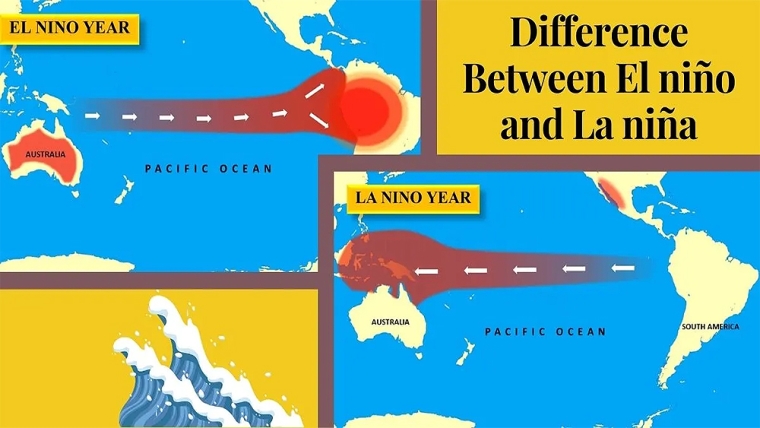
An interesting media release came through the other day from AgResearch. Headlined as a “Data Supermarket” it is an online compilation of all sorts of information gathered together and updated and made available to all and sundry. The prime purpose of the resource is to provide information on land use options both at present and in the future under different climate change periods.
The products and topics covered are extensive - ranging from any and every land use product to changes in climate and erosion scenarios going into the future.
Much, perhaps all of this information has been available in various nooks and crannies on government and research centres sites in the past but knowing where to look and navigating the numerous updates and dead ends has always made sourcing much of it a trying task. This new resource should alleviate much of the frustration. Some examples of the maps and information are shown below.
Horticulture perhaps makes some of the more interesting browsing, especially given the changes to where various crops etc can be grown due to the impacts of climate change and additional varieties coming to the market. Among the range of crops, kiwifruit and avocados are always interesting crops to follow given the profitability usually associated with them. (Pasture and livestock have limited coverage in the database although rainfall and PED transpiration do get a brief mention).
Below are a series of maps showing current through to 2098 and where potential avocado and kiwifruit commercial crops may get grown.
Avocado suitability under various climate change scenarios
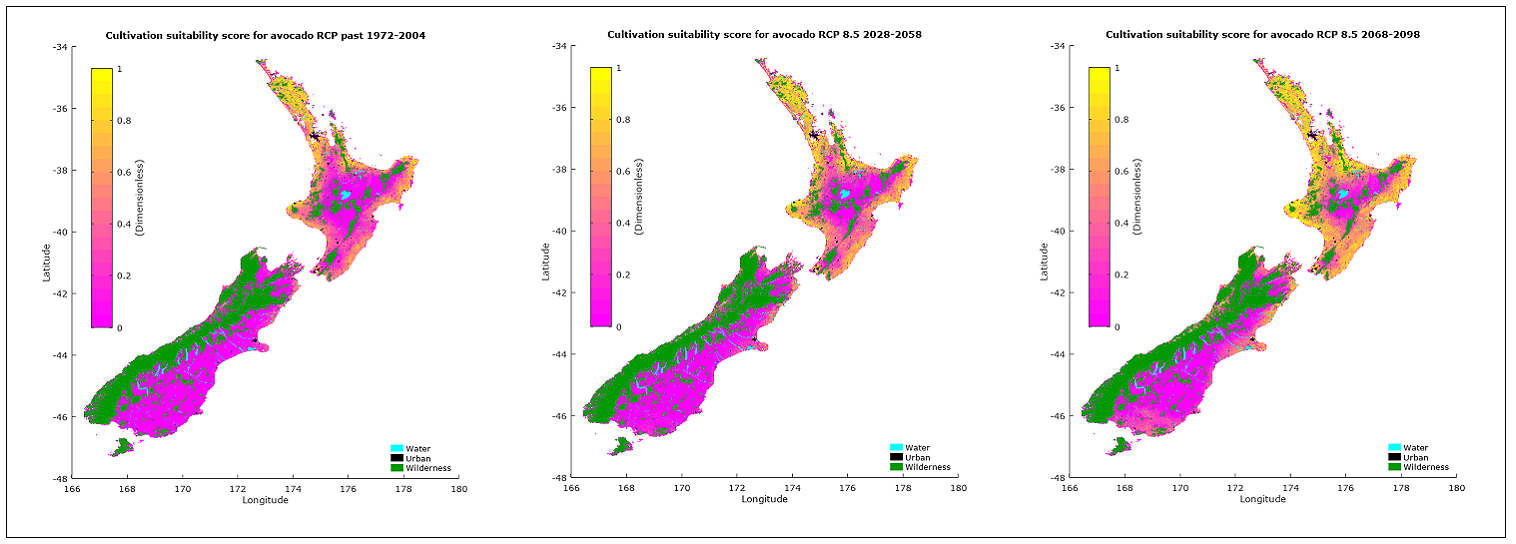
As can be seen the favourable yellow shaded areas have spread out considerably from the traditional regions of Northland and the Bay of Plenty into the Waikato, Taranaki and even down the east coast from Tairawhiti to southern Hawkes Bay.
For the Kiwifruit maps below there is a move away from the Northland region, given it chilling requirements, to the Waikato and even Canterbury looks to have some promise although likely not in my lifetime. Although given the size of the Feijoas and Figs we have produced in the last couple of years it is not hard to see future potentials, we even had passionfruit ripen on the vine this year (eventually).
Kiwifruit suitability under various climate change scenarios
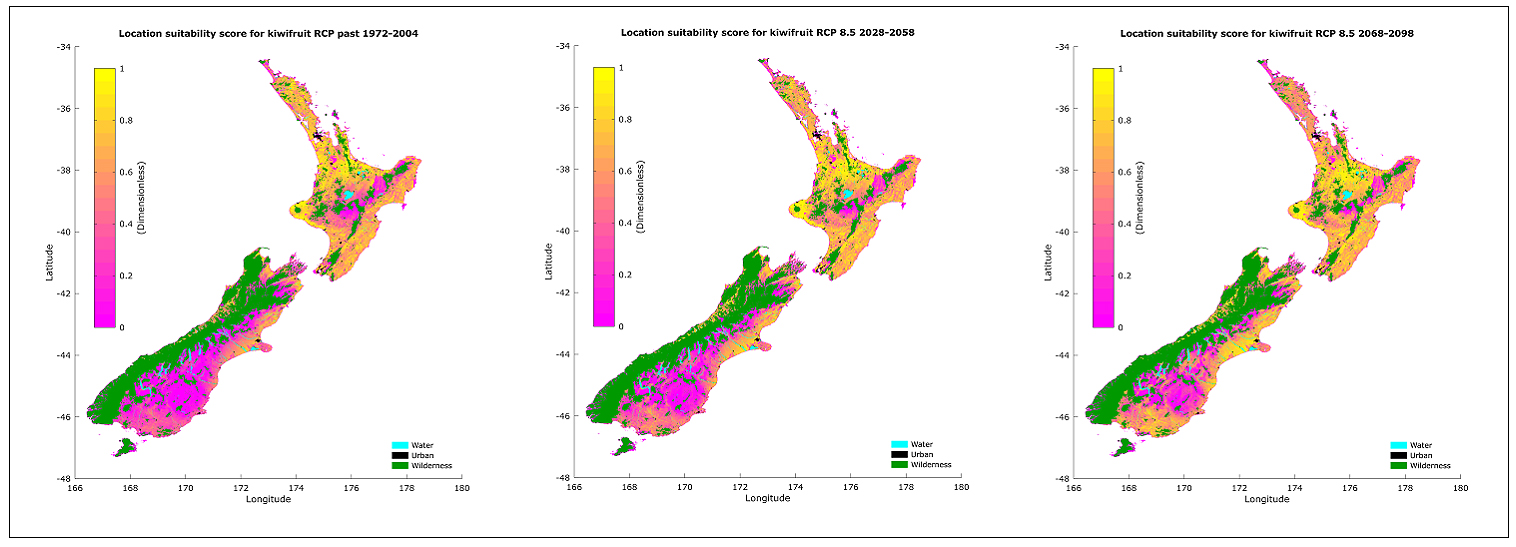
Given that New Zealand has be identified as one of the five regions that is best situated to withstand the worse impacts of climate change (along with Scandinavian countries and Iceland) it will be an interesting look at detail around the shifting viability of other food crops grown around the globe especially ones that New Zealand competes against, but that is for another day.
Some of the data is arguably old (2021) in this time of requiring immediate accurate information, however much is very up-to-date. The value of the site apart from the ease of access to multiple sources will be only if it is kept up-to-date with the latest releases. But congratulations need to go to the developers and with the now benefit of hindsight it seems long overdue. A practical webinar at 12:30pm on Wednesday, May 31, 2023 will demonstrate how to find what you need at the Data Supermarket and discuss who it's for, how to use it, and when and where use is appropriate. Register for the webinar via Zoom.
Not surprisingly when a look is done at the NIWA forecast site, summarised on the map below, the short term trends are all aligned with the warming climate and while the vivid red colour perhaps over states the short term changes we have had at least 7 of the warmest years recorded in the last 10 years. A look at another site Accuweather reinforces what NIWA believes is ahead.
While 2023 has been notable, especially in the North Island, for the heavy rainfall events the shift to an El Nino phase later in the winter and with the increase in westerly flows mean that at least in the shorter term these may start to be put behind us and drier periods begin to be the norm. I uses to always prefer an La Nina in the past but given the cyclones and storms besetting the country this last year or so I’m having to rethink this attitude.
Meanwhile, it was the second-driest summer on record for Southland, the fifth-driest for Otago, and sixth-driest for the West Coast, according to an analysis according to NIWA’s. So, extremes at both ends of the country and on the weather scale.
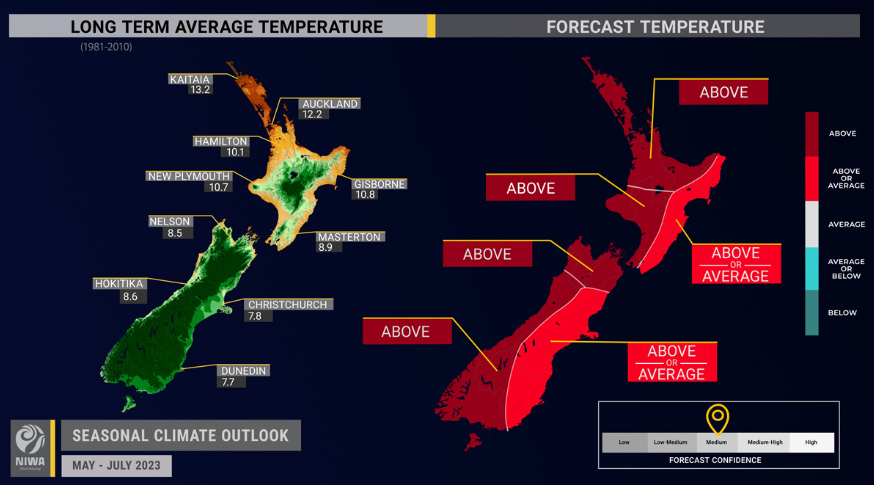
The Accuweather site is looking at only Auckland in this case, but the July graph is typical of what it shows for all months from May to August and most days are above average temperature both as highs and minimums.
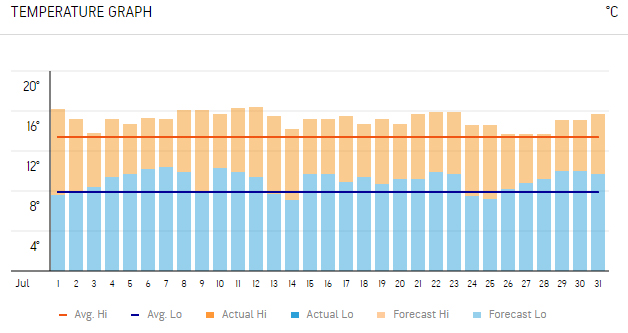
With the increasing potential of El Nino in the upcoming seasons a review of 2023-24 may look quite different to 2022-23.
6 Comments
I will beat profile to it and point out that using RCP8.5 is the extreme case and unlikely to happen
I wouldnt count on that, nobody knows where the tipping point is. Maybe not so much as the temperature increase, but the effects. Just look lately, at seaweeds and clams turning up, only a matter of time to land based effects show up. Like if we don't get a decent frost, the multitude of pest species multiplying.
Don't know how commercial guys got on but it was so wet and sunless this summer our passion fruit struggled to ripen, feijoa were pitiful and our chooks stopped laying completely in February but are still going now.
All local areas I've seen figures for are double the rainfall for last 12 months. Almost looking forward to la Nina.
We need some sort of exception analysis for the past year since the Tongan volcano eruption.
I think we have had a far worse summer, with very few sunny days and lots of very wet weather because of that eruption. No papers have come out analyzing the impact of the eruption on the Weather yet, but I am very sure it has had an impact.

We welcome your comments below. If you are not already registered, please register to comment.
Remember we welcome robust, respectful and insightful debate. We don't welcome abusive or defamatory comments and will de-register those repeatedly making such comments. Our current comment policy is here.